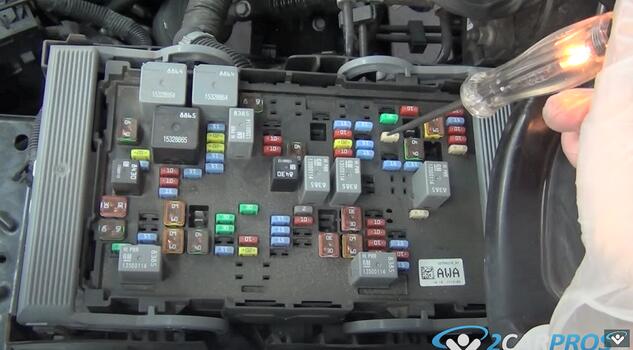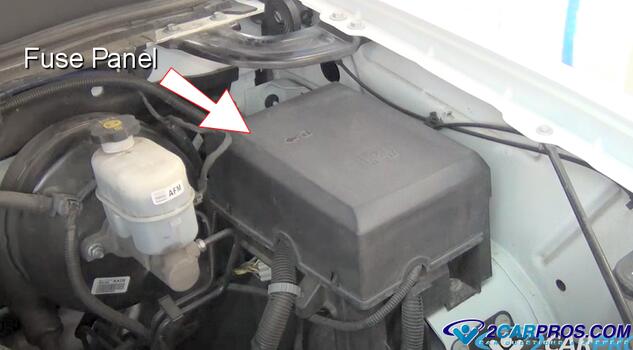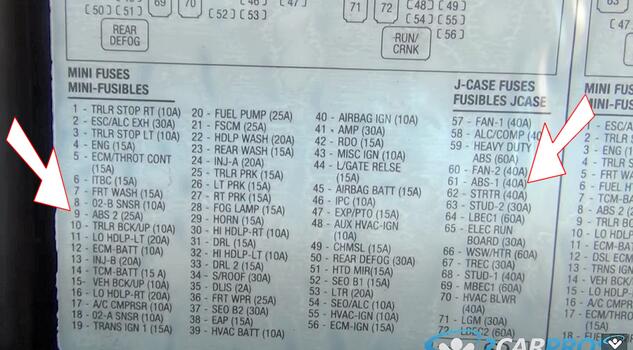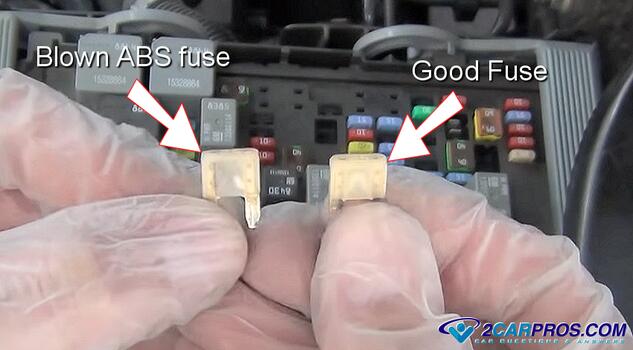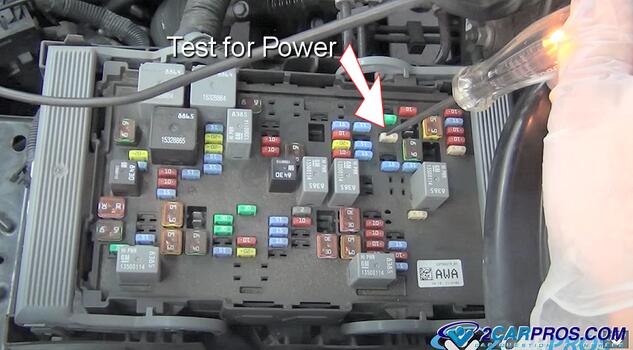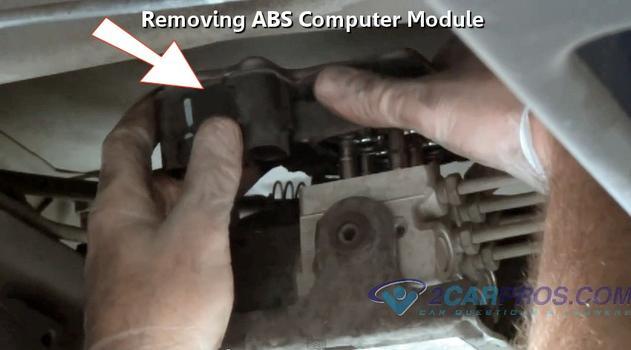When you see an ABS or Traction Control warning light on the first thing you should check is the system fuse. Much like any electrical component, a fuse is used to protect the delicate electronics inside the control modules. If the control module loses power it will cause the system to shut down, rendering the system disabled. These fuses are located under the hood in most cases, inside the main fuse panel (PDC - power distribution center), please follow the guide below.
Popular Fuse Failure Causes
- ABS/Traction Control pump motor shorts out
- Brake fluid control solenoid internal failure (module)
- Shorted control relay
- Wiring damage due to rodents
Locate ABS Traction Control Fuse
1. Lift the hood and locate the main fuse panel which is usually on the right or left side of the engine compartment and remove the lid, also you can consult your car's owner manual for exact locations. If you still cannot find the ABS-Traction Control fuse location please ask one of our experts at no cost.
2. On the bottom or top of the fuse panel, the location of the ABS-Traction Control fuses should be clearly marked, also showing the identification number and the amperage fuse used. Never install a fuse with more amperage than is called for, this could cause damage to wiring or additional components.
3. Once the fuse has been located simply remove for inspection, grasp the fuse and pull upwards. Check the fuse filament by looking through the clear part of the fuse, if blown, it will be obvious.
4. If the fuse looks okay then you should check for power at the fuse by switching the ignition system on, this will let you know the fuse and systems are getting power by using a test light.
Conclusion
Once completed, reinstall the lid to the fuse panel and you are all set.
Watch the Video!
Please watch this video of the job being done to glean additional helpful information.
Credits
This guide knowledge base was created by the 2CarPros Team, and by Ken Lavacot: Automobile repair shop owner and certified master automobile technician of over 30 years. If you have question or need help please ask one of our experts we are happy to help. Please visit our 2CarPros YouTube Channel.
